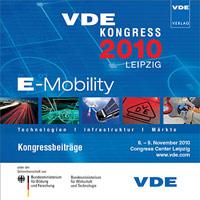Performance Prediction and Power Distribution Strategies in (Hybrid) Electric Vehicles
Konferenz: VDE-Kongress 2010 - E-Mobility: Technologien - Infrastruktur - Märkte
08.11.2010 - 09.11.2010 in Leipzig, Deutschland
Tagungsband: VDE-Kongress 2010
Seiten: 6Sprache: EnglischTyp: PDF
Persönliche VDE-Mitglieder erhalten auf diesen Artikel 10% Rabatt
Autoren:
Schneider, C.; Cebulski, B.; Adam, M.; Geipel, S. (IAV GmbH, Chemnitz, Germany)
Inhalt:
Against the background of increasing consumption and emission requirements as well as steady shortage of resources, the development of hybrid and electric vehicle concepts is intensified. More and more complex drive train architectures with various involved components are derived. In hybrid or electric traction systems with a single energy store (traction battery) but several energy converters (electric drives), whose total power exceed the capability of the energy store, some kind of central intelligence is required to distribute the available power consciously within the system. Furthermore, in order to achieve a predictable vehicle performance, the implementation of a performance prediction for the electric drives is essential. It needs to take into account not only the machine-inherent limitations but also all restrictions of the whole system. Each component is subject to its own restrictions as well as conditions and influences originating from interaction with other components. Therefore, measuring and considering machine and inverter temperatures only, is not sufficient. Another important aspect is the gained information of such a prediction, which can be used by the (hybrid) strategy. Assuming an appropriate implementation, this yields further potential to reduce consumption and emission values on the one hand and to improve vehicle performance on the other hand. For the time frame to be used for the prediction, a trade-off between gained information and feasible accuracy and reliability needs to be defined. The target of this paper is to increase the understanding of the necessity of performance prediction and power distribution strategies and to show the miscellaneous, component-depending influencing factors, that need to be taken into account. Different approaches are mentioned along with their advantages and disadvantages. Finally the achievable accuracies as well as existing constraints and necessary simplifications are discussed.


